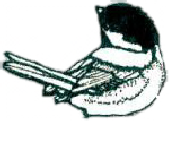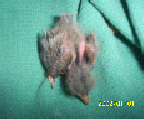Second Chance Wildlife
Rehabilitation
“Until we extend the circle of our compassion to all
living things, we will not find peace.”
Albert Schweitzer


Did the baby have ants on it or around it?
YES– gently brush the ants off, place the baby in a small box lined with clean tissue or paper towels and call a wildlife rehabilitator immediately. Do not feed or give water to the bird.
NO – go to next step
Did a cat, dog or child have the bird?
YES – place the baby in a small box lined with clean tissue or paper towels and contact a rehabilitator immediately. Do not feed or give water to the bird.
NO – go to the next step
Can you safely get the baby back in its nest?
YES-
NO – If this is because the nest has fallen with the baby, you can make a substitute nest using a wicker basket, a plastic hanging pot, etc. If the container is plastic, drill several holes all over the bottom and sides to allow for drainage if it should get wet. Line the inside of the new nest with the old nest, DRY grass and leaves, hay. Securely fasten the new nest as close as possible to where the old nest was being sure it is protected from the sun and weather by overhanging branches. Once securely fastened place the baby in it then go away and watch from afar. If you see a parent bird going to the nest, the baby is fine. If not, check on the baby again in ONE HOUR. If it is warm, raises its head and opens its mouth, leave it alone, mom is caring for it. If it is cold, contact a rehabilitator immediately. If you stay too near the new nest or check too often, the parents may not return. Fear for their own safety will often overpower their parental instincts.
If you cannot safely reach the nest or don’t know where the nest is, contact a wildlife rehabilitator immediately. Do not feed or give water to the bird.


Naked Baby Birds